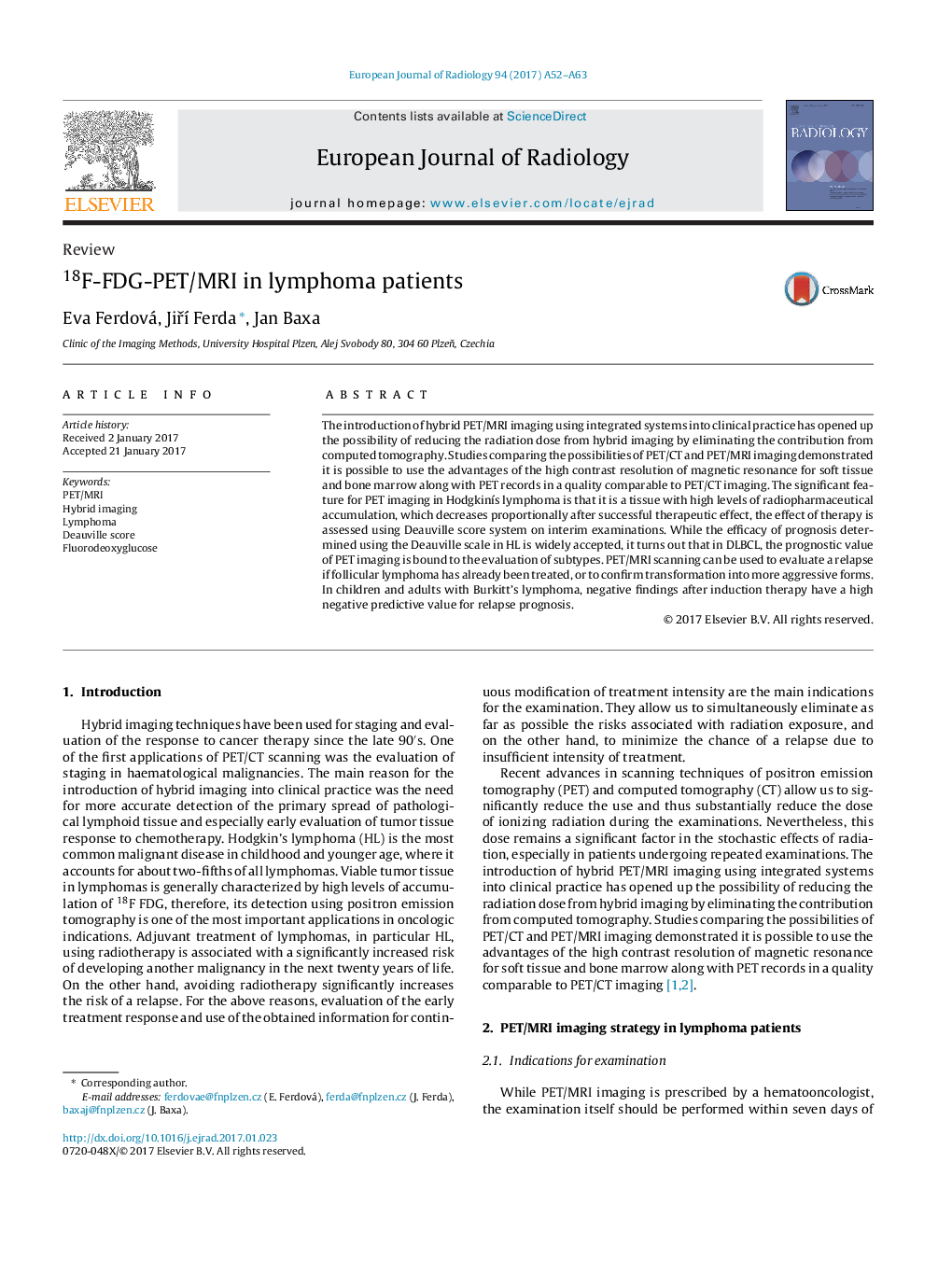| Article ID | Journal | Published Year | Pages | File Type |
|---|---|---|---|---|
| 5726282 | European Journal of Radiology | 2017 | 12 Pages |
â¢Hybrid 18F-FDG-PET/MRI imaging is a clinically beneficial alternative to 18F-FDG-PET/CT in patients with lymphomas, especially in children and adolescents suffering from HodgkiÅs lymphoma.â¢The main advantage of PET/MRI scanning is the possibility of better visualizing the infiltration of bone marrow, the liver and spleen at the same time, with a significant reduction in the radiation dose, while avoiding CT scanning.â¢Interim PET/MRI examination is an important tool to estimate the prognosis of the disease and in particular modify or choose a more intensive treatment in case of insufficient metabolic responses to two series of induction chemotherapy in patients with HodgkiÅs lymphoma.â¢In other lymphomas, it provides a suitable visualization to select the site of biopsy or re-biopsy and to determine the transformation of indolent or low-aggressive disease in patients with aggressive forms of lymphoma.â¢In comparison with PET/CT imaging, PET/MRI is a method that can be used to better identify small nodules, in particular by diffuse imaging, and also to distinguish metabolically active brown adipose tissue from tissues infiltrated by lymphoma.
The introduction of hybrid PET/MRI imaging using integrated systems into clinical practice has opened up the possibility of reducing the radiation dose from hybrid imaging by eliminating the contribution from computed tomography. Studies comparing the possibilities of PET/CT and PET/MRI imaging demonstrated it is possible to use the advantages of the high contrast resolution of magnetic resonance for soft tissue and bone marrow along with PET records in a quality comparable to PET/CT imaging. The significant feature for PET imaging in HodgkiÅs lymphoma is that it is a tissue with high levels of radiopharmaceutical accumulation, which decreases proportionally after successful therapeutic effect, the effect of therapy is assessed using Deauville score system on interim examinations. While the efficacy of prognosis determined using the Deauville scale in HL is widely accepted, it turns out that in DLBCL, the prognostic value of PET imaging is bound to the evaluation of subtypes. PET/MRI scanning can be used to evaluate a relapse if follicular lymphoma has already been treated, or to confirm transformation into more aggressive forms. In children and adults with Burkitt's lymphoma, negative findings after induction therapy have a high negative predictive value for relapse prognosis.
